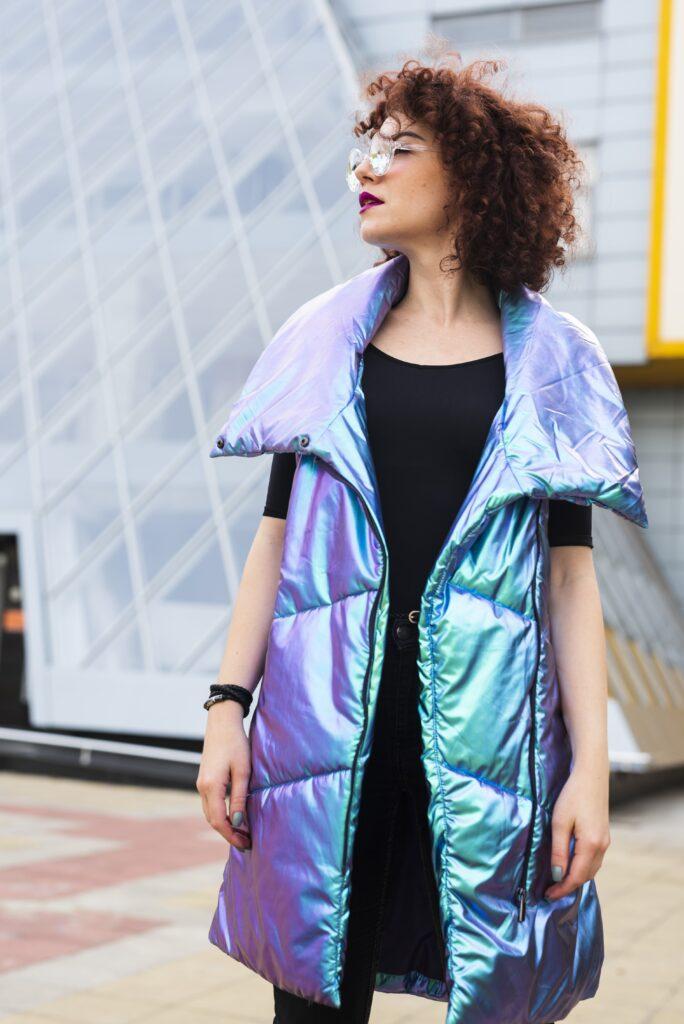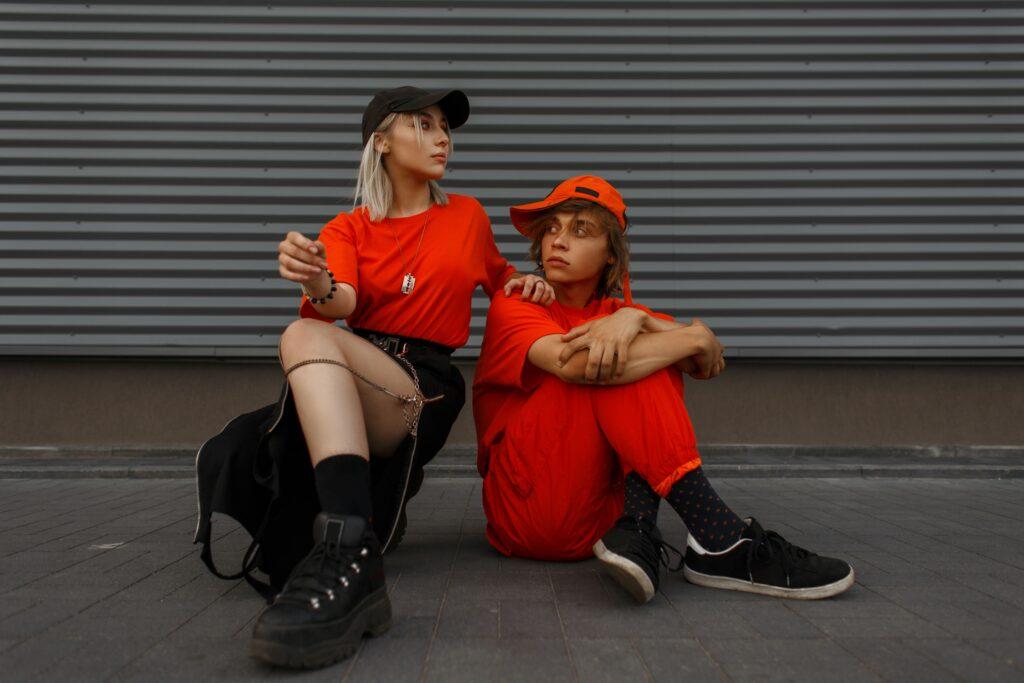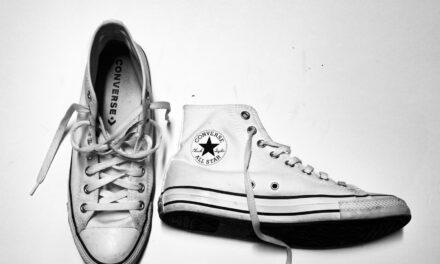Streetwear is a highly popular style of clothing that has been making waves in the fashion industry for several decades now. It is a type of casual and comfortable clothing that has its roots in skateboarding and hip-hop culture. Despite gaining mainstream popularity, streetwear remains highly controversial, with many fashion critics questioning whether it can be classified as an aesthetic.
Definition of Streetwear
The term “streetwear” refers to casual clothing that is worn on the streets rather than on the runway or in formal settings. It is often characterized by loose-fitting clothing such as t-shirts, hoodies, and sweatpants.
Bold graphics and logos are also common features of streetwear, along with sneakers as a staple item. Streetwear emerged from skateboarding and hip-hop culture in the 1970s and 1980s.
The style was originally developed by skateboarders who wanted comfortable clothes that were durable enough to withstand the rigors of their sport. Later, hip-hop artists adopted streetwear as a way to express their own unique style and identity.
The Debate on Whether Streetwear is an Aesthetic or Not
The question of whether streetwear can be considered an aesthetic has been the subject of much debate in recent years. Some argue that it represents a subculture with its own unique style and values, while others contend that it lacks innovation in design and simply copies trends from other fashion genres.
One reason why this issue remains contentious is because there are no clear boundaries around what constitutes an aesthetic. Some believe that an aesthetic must have specific characteristics such as symmetry or balance, while others argue that it simply refers to a particular style or trend.
Regardless of where one stands on this debate, there is no denying that streetwear has had a significant impact on the fashion industry over the past few decades. From collaborations between high-end fashion brands like Louis Vuitton and Supreme to the integration of streetwear elements into luxury fashion collections, it is clear that streetwear is here to stay.
Historical Context of Streetwear
Origins of streetwear in skateboarding and hip-hop culture
Streetwear is a style of clothing that emerged from the underground youth cultures of skateboarding and hip-hop in the 1980s. It was characterized by its relaxed and loose-fitting silhouettes, bold graphics, and use of athletic materials such as nylon and polyester. The term streetwear itself is said to have been coined by Shawn Stussy, founder of the eponymous brand, who started out selling surfboards with hand-drawn graphic tees.
Skateboarding was a subculture that originated on the west coast of the United States in the 1970s. It consisted primarily of young people who were drawn to its rebellious nature and non-conformist attitude.
Skate fashion at this time involved wearing comfortable clothing that allowed for mobility while performing tricks on a skateboard. This included loose-fitting jeans, t-shirts, sneakers, and baseball caps.
Hip-hop culture also played a significant role in shaping streetwear fashion. Hip-hop emerged from African-American communities in New York City during the 1970s as an expression of resistance against racial inequality and economic oppression.
Its fashion was characterized by baggy clothing, oversized t-shirts with bold logos or designs, sneakers with heavy soles for dancing or jumping. These elements were later incorporated into streetwear apparel.
Emergence of streetwear brands such as Stussy, Supreme, and A Bathing Ape
As skateboarding and hip-hop gained mainstream popularity throughout the 1980s and 1990s, entrepreneurs began to capitalize on their respective subcultures’ fashion trends to create their own brands catering to these groups’ unique aesthetics. One such entrepreneur was Shawn Stussy who founded ‘Stussy’ in 1984 after his surfing business slowed down due to an injury.
The company started with graphic t-shirts created for his friends and soon became a global brand. Supreme is another streetwear brand that gained worldwide recognition due to its collaborations with high-end fashion labels such as Louis Vuitton and Nike.
It was founded in 1994 by James Jebbia, who was also involved in the creation of Stussy’s New York store. Another streetwear label that has had a significant impact on the industry is A Bathing Ape (BAPE).
BAPE was founded in Japan by Nigo in 1993 and quickly gained popularity across Asia and the United States. The brand’s signature camo prints, shark hoodies, and ape logos have become iconic symbols of streetwear fashion.
Streetwear emerged from the subcultures of skateboarding and hip-hop and has since evolved into a multimillion-dollar industry. Brands like Stussy, Supreme, and A Bathing Ape have played a significant role in shaping streetwear fashion and popularizing it around the world.
Characteristics of Streetwear
Loose-fitting clothing
One of the defining characteristics of streetwear is its emphasis on oversized and loose-fitting clothing. This style can be traced back to the origins of streetwear in skateboarding and hip-hop culture, where comfortable clothes that allowed for ease of movement were essential.
Today, oversized hoodies, baggy pants, and boxy t-shirts continue to be staples in the streetwear wardrobe. The popularity of oversized clothing also reflects a shift away from traditional gender norms in fashion.
In recent years, many women have embraced streetwear as a way to express their individuality and reject the restrictive expectations placed upon them by society. As such, many streetwear brands offer unisex or gender-neutral clothing options.
Bold graphics and logos
Another hallmark of streetwear is its use of bold graphics and logos. From the iconic Supreme box logo to the camouflage patterns seen on many Bape items, these designs help to create a sense of identity and community among fans of particular brands or subcultures.
Streetwear graphics often draw inspiration from pop culture icons such as musicians, artists, or cartoons. Some designs play with irony or subvert traditional symbols—for example, Stussy’s signature swirl logo was modeled after a popular Chanel perfume bottle.
As with any fashion trend driven by branding and consumerism, some critics argue that this emphasis on logos is superficial and ultimately empty. However, others see it as a form of self-expression that allows wearers to signal their interests or affiliations without using words.
Sneakers as a staple item
Sneakers have become an essential part of the modern streetwear uniform. Many enthusiasts collect limited edition releases from popular brands like Nike or Adidas and display them proudly on social media.
Beyond their aesthetic appeal, sneakers are also valued for their functionality. Many streetwear fans participate in activities like skateboarding, basketball, or cycling, and require shoes that can withstand the wear and tear of these pursuits.
As such, many sneaker brands have begun collaborating with streetwear labels to create hybrid designs that combine style and functionality. Sneakers are also seen as a way to level the playing field between high fashion and streetwear.
While designer clothing may be prohibitively expensive for many young people, sneakers offer a more affordable (but still coveted) entry point into fashion culture. This democratization of style is another reason why sneakers have become such an integral part of the streetwear aesthetic.
Influence on Fashion Industry
Collaboration between high-end fashion brands and streetwear labels
Streetwear has come a long way from its humble beginnings in skateboarding and hip-hop culture. Today, it is no longer just a subculture but a mainstream fashion trend that has captured the attention of high-end fashion brands.
In recent years, we have witnessed collaborations between luxury fashion houses such as Louis Vuitton, Gucci, and Dior with streetwear labels like Supreme, A Bathing Ape and Off-White. These collaborations represent an acknowledgment by luxury brands of the impact that streetwear has had on modern fashion.
They have also helped bridge the gap between high-end fashion and street culture, bringing together two worlds that were once seen as polar opposites. The result has been collections that feature elements of both styles, creating unique designs that appeal to a wider range of consumers.
Integration of streetwear elements into luxury fashion collections
The influence of streetwear is not limited to collaborations; it has also seeped into luxury fashion collections themselves. We are now seeing elements such as baggy fits, bold graphics and sneakers being incorporated into high-end designer collections.
Brands like Balenciaga and Vetements have pushed the boundaries by creating oversized hoodies and sweatshirts with exaggerated proportions. This integration of streetwear elements into luxury fashion collections has had a significant impact on the industry.
It has led to designers rethinking traditional silhouettes and experimenting with new shapes and sizes. Additionally, it has opened up an entirely new market for luxury brands who were once only catering to traditional customers.
The Future of Streetwear in Fashion
The integration of streetwear into high-end designer collections signals an exciting time for the future of fashion. We can expect to see more experimentation with silhouettes, colors, textures, and patterns as designers continue to incorporate streetwear elements into their collections.
This trend also offers a unique opportunity for emerging streetwear labels to gain exposure and legitimacy in the fashion industry. However, it’s important to note that this integration of streetwear into luxury fashion has not come without criticism.
Some argue that it dilutes the authenticity of street culture and its rebellion against mainstream norms. Others claim that the high prices associated with these collaborations are exploitative and exclude many who cannot afford them.
The influence of streetwear on high-end fashion is undeniable. Collaborations between luxury brands and streetwear labels have opened up new markets while integrating elements of both styles into designer collections.
The future of fashion looks promising as designers continue to experiment with new styles inspired by street culture. However, it’s important that we remain mindful of criticisms against this trend and ensure that it doesn’t lose its authenticity along the way.
Criticisms Against Streetwear as an Aesthetic
Accusations of Cultural Appropriation
One of the most common criticisms leveled against streetwear is that it often appropriates elements from other cultures without giving proper credit or respect to their origins. For example, streetwear brands have been accused of co-opting traditional African patterns, Native American headdresses, and Japanese kanji characters, among other cultural symbols.
Some argue that by using these symbols in a superficial way without any acknowledgement or understanding of their cultural significance, streetwear designers are perpetuating harmful stereotypes and erasing the histories and identities of marginalized groups. Others counter that streetwear’s adoption of these symbols is a form of appreciation rather than appropriation.
They argue that by incorporating elements from different cultures into their designs, streetwear designers are celebrating diversity and promoting cross-cultural exchange. Furthermore, they say that many members of these cultures actually appreciate seeing their traditional symbols being given new life in unexpected contexts.
Lack of Innovation in Design
Another criticism often leveled against streetwear is that its designs lack originality or creativity. Critics point out that many popular streetwear items such as oversized hoodies, graphic t-shirts, and snapback hats have remained largely unchanged for years, with little variation or evolution in style.
While some argue that this lack of innovation is a sign of stagnation or laziness on the part of designers, others see it as a deliberate choice rooted in the subculture’s values. Streetwear has always emphasized comfort and functionality over flashy design or luxury materials; for many enthusiasts, the appeal lies not in constant novelty but in the consistency and reliability offered by classic styles.
Despite these criticisms, however, it is clear that streetwear continues to be a highly influential force within both fashion and popular culture at large. Whether one views it as an aesthetic movement or simply a subculture with a distinct style and attitude, there is no denying its impact on the way we dress, think, and express ourselves in the modern world.
Defense for Streetwear as an Aesthetic
Argument that it represents a subculture with its own unique style and values
One of the key arguments for considering streetwear as an aesthetic is its close association with specific subcultures. From skateboarding and hip-hop to graffiti art and punk rock, streetwear has always evolved in tandem with these movements. As such, it can be seen as a visual representation of the principles and values held by these communities.
For example, skateboarding culture has historically celebrated individuality, creativity, and non-conformity. These values are reflected in the casual, comfortable clothing favored by skaters – baggy pants or shorts paired with oversized t-shirts or hoodies – which prioritize freedom of movement over strict adherence to fashion trends.
Similarly, hip-hop culture has long been associated with bold colors, graphic prints, and distinctive accessories such as chunky gold chains or snapback hats. Streetwear designers have drawn inspiration from these aesthetics to create their own unique designs that capture the essence of each subculture.
Evidence that it has influenced mainstream fashion trends
Another argument in favor of recognizing streetwear as an aesthetic is its undeniable impact on mainstream fashion trends in recent years. Gone are the days when streetwear was dismissed as “just” casual wear; today it is embraced by high-end designers and luxury brands alike.
The emergence of collaborations between streetwear labels like Supreme or Off-White and luxury houses like Louis Vuitton or Dior has helped to blur the lines between “street” and “high” fashion. This trend can be seen not just on runways but also on city streets around the world.
Sneakers once reserved for basketball courts or running tracks are now paired with suits or dresses; hoodies once considered too casual for public view are now worn under blazers or even formal coats. The influence of streetwear can also be seen in the rise of athleisure, a trend that prioritizes comfort and functionality over traditional ideas of dressiness.
The Intersection of Subculture and Mainstream
The debate over whether streetwear should be considered an aesthetic reflects larger questions about the intersection between subculture and mainstream culture. Should subcultures remain separate and distinct from mainstream society, or is it inevitable that elements of these cultures will be co-opted and commodified by larger forces? While there are certainly valid criticisms to be made about the ways in which streetwear has been appropriated or diluted for commercial gain, it is also possible to see its rise as a sign of the power and influence wielded by subcultural communities.
By creating unique styles that resonate with a diverse range of people, streetwear has helped shape fashion trends around the world – while still maintaining its ties to the countercultural movements that gave rise to it in the first place. Ultimately, whether or not streetwear is considered an aesthetic may be less important than its ongoing role as a symbol for individuality, creativity, and self-expression in a rapidly changing global culture.
Conclusion
Recapitulation of the Arguments for and Against Streetwear as an Aesthetic
After a thorough examination of the history, characteristics, and influence of streetwear, it is clear that there are valid arguments both for and against its classification as an aesthetic. On one hand, proponents view streetwear as a unique subculture with its own set of values and style. They point to its roots in skateboarding and hip-hop culture, the emergence of popular brands such as Supreme and A Bathing Ape, and the rise of celebrity influencers like Kanye West who have brought streetwear into the mainstream.
On the other hand, critics argue that streetwear lacks innovation in design and often appropriates elements from other cultures without proper credit or respect. Some see it as a passing trend rather than a legitimate aesthetic movement.
Personal Opinion on Whether or Not it Should be Considered One
As someone who appreciates both fashion and street culture, I believe that streetwear should indeed be considered an aesthetic. Its origins stem from marginalized communities using fashion as a form of self-expression and rebellion against mainstream society. It has developed into a distinct style with recognizable characteristics that are influencing high-end fashion.
While it is true that there have been instances where cultural appropriation has occurred within streetwear, this does not mean that the whole movement should be dismissed. Instead, we should acknowledge these issues while also celebrating the positive impact that streetwear has had on modern fashion.
Whether or not one considers streetwear to be an aesthetic is subjective. However, with its rich history, unique characteristics, influence on high-end fashion, and roots in subculture rebellion against societal norms – it is easy to make a case for why it should indeed be considered one.













